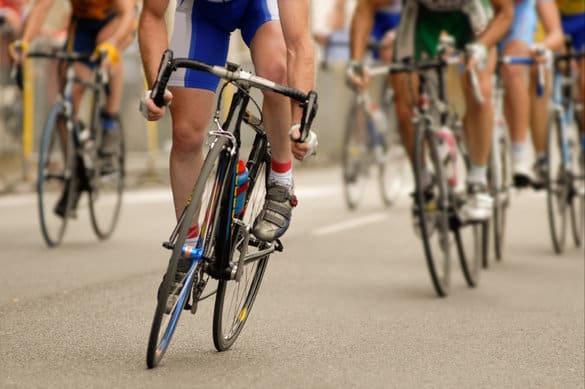Most races end up in a bunch sprint, which normally is exclusively for the sprinters. But it is only a small percentage of Training4cyclists.com’s readers who are pure sprinters and play a role on the last 200m. I will now make a short description of how you can win the next bunch sprint ”“ at least in the theory”¦
1. Pick your parents carefully
When it comes to true sprinters, genes play a big role. Sprinters are born to be sprinters. It is said that you can make a slow donkey to a faster donkey, but you can never make a donkey to a race horse. This animal is simply born to be slow and it is the same situation for many non-sprinters. Naturally born sprinters have a higher percentage of fast twitch fibres than normal people. Road cycling sprinters are not as pure sprinters as you see them in track and field. This is because the sprinters have to carry themselves a long distance before they can see the finish line.
Before you give up, it is important to notice that in many races, stronger riders use the terrain to challenge the sprinters before the final 200m. They attack on the hills and make jumps in the crosswinds. That is their chance to beat the sprinters. So if you already know that the sprinters are faster than you, then you have 3 options: Attack, attack, attack”¦ Got it?
2. Be patient
Save your energy for the final km. Until then, your job is to get through the race as easily as possible. There are many riders who could do a reasonable sprint, but they do not do it as they spend energy on desperate attacks because they do not believe in themselves. So make your decision before the race and stick to it. If you decide to go for the sprint, do it 100 percent. Otherwise forget about it.
3. Get in position
Sprint is all about position. If you are not in position you will never win a sprint even if you are the fastest sprinter. Keep the wheel of a sprinter you know is going to be among the first riders. If you are lucky or talented, you might have team mates that will help you get in position.
4. Be strong
Power is important, and for sprinters power is essential. If you want to make an incredibly fast sprint, you’ve got to train for it. That means specific sprint and anaerobic endurance training, and maybe strength training. You can read more about strength and sprint training here at this blog.

